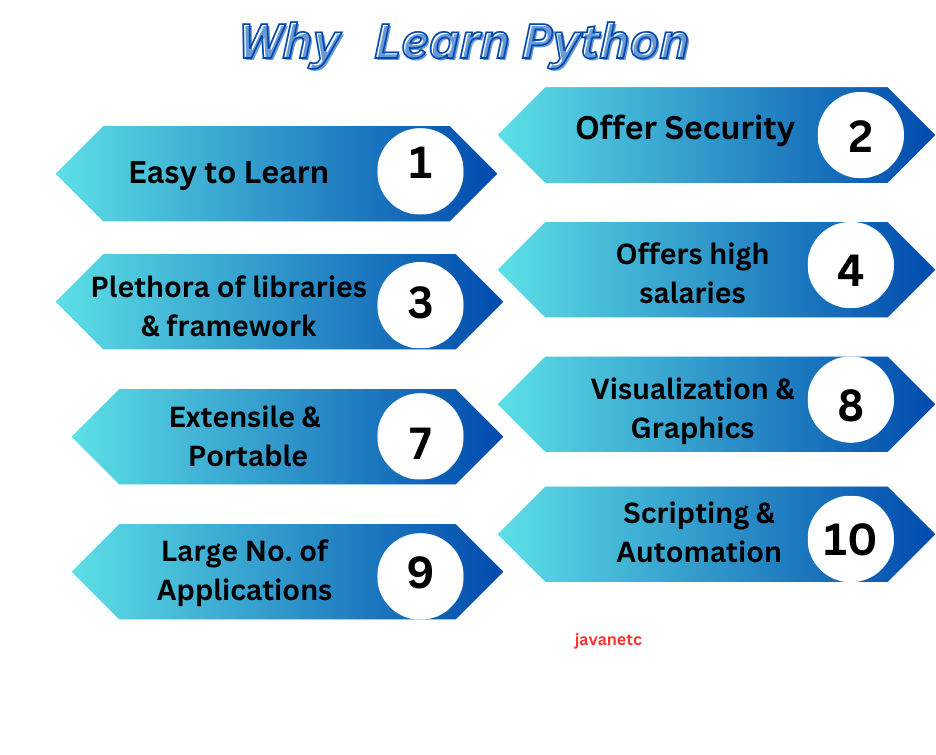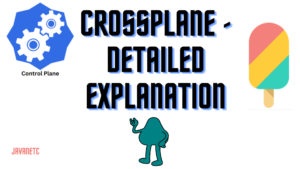Introduction
Python, a high-level, object-oriented programming language, was developed by Guido van Rossum. Its foundations lie in data and human comprehension, distinguishing it from other programming languages.
Initially recognized for its proficiency in automating mundane tasks, Python soon showcased its versatility as a general-purpose language. It transcended the boundaries of purpose-specific languages like HTML/CSS, Ruby, or PHP.
The introduction of Python as a general-purpose language revolutionized programming. No longer confined to specific problems, Python found applications in diverse domains such as Web Development, App Development, Data Science, and Machine Learning.
Table of Contents
A Simple Example of Python Code
# Python Program to Calculate the Sum of Two Numbers
# Prompt the user to enter the first number
num1 = int(input("Enter the first number: "))
# Prompt user for second digit
num2 = int(input("Enter the second number: "))
# Calculate the sum of the 2 numbers
my_sum = num1 + num2
# Display the result
print("The sum of the two numbers is:", my_sum)
In the above code, we solicit two numbers from the user, compute their sum, and display the result, exemplifying Python’s simplicity and utility.
Python’s applications span various domains:
- Python for Programmers: Python’s high level of abstraction, interactivity, and simple syntax make it a favorite among programmers.
- Python for AI and Machine Learning: Python’s stability, flexibility, and simplicity make it a preferred language for AI and Machine Learning. Its rich ecosystem of AI and ML toolkits caters to Data Scientists and Machine Learning practitioners.
- Data Analytics and Data Science: Python’s efficiency in data manipulation and analysis meets the demands of the burgeoning field of Data Analytics and Data Science.
- Web Development and Game Development: Python’s efficiency in rapid prototyping and the availability of frameworks like Django and Flask make it a compelling choice for Web Development and Game Development.
- High Compatibility: Python’s support for all major operating systems ensures code portability without recompilation.
- Python for sysadmins: Python simplifies automation for sysadmins, enhancing productivity in managing systems.
- Python Community: Python boasts a vast and supportive user community, offering solutions and guidance across diverse challenges.
Python’s popularity stems from several factors:

- Ease of Learning: Python’s straightforward syntax, akin to English, reduces the learning curve, making it ideal for beginners.
- Rich Ecosystem: Python’s extensive collection of libraries, frameworks, and packages facilitates diverse applications, from data analysis to web development.
- Wide Applications: Python’s versatility is evident in its applications across industries like healthcare, finance, and education, fostering a growing demand for Python proficiency.
- Dynamic Typing and Extensibility: Python’s dynamic typing and extensibility enhance flexibility, enabling seamless integration with other languages and efficient code development.
Python’s syntax distinguishes it from other languages:
- Python’s readability and simplicity contrast with the complexity of other languages, necessitating fewer lines of code.
- Python employs indentation for code blocks, emphasizing whitespace significance, unlike languages that use curly braces.
- Python’s dynamic typing eliminates the need for explicit variable declaration, enhancing flexibility.
Frequently Asked Questions:
- Is Python suitable for beginners? Yes, Python’s simplicity and extensive support community make it ideal for beginners.
- How lengthy does it generally take to analyze Python? Learning Python duration varies based on individual goals and learning frequency, ranging from weeks to months.
- Who uses Python today? Python finds applications across professions, including software development, data science, and network engineering, among others.
- Is it advisable to learn Python 2 or Python 3? Python 3 is recommended, as Python 2 is no longer supported.
- What types of jobs use Python? Python is utilized in various roles, including web development, data analysis, and artificial intelligence.
- How does Python work in machine learning and data science? Python excels in these fields, boasting specialized libraries and community support.
- Can Python be used for game development? While not industry-standard, Python can be used for educational or simple game development projects.
Conclusion
Python’s future in the tech industry is promising, given its relevance in critical fields and continuous updates. Embrace Python today and embark on a journey toward versatile development!



